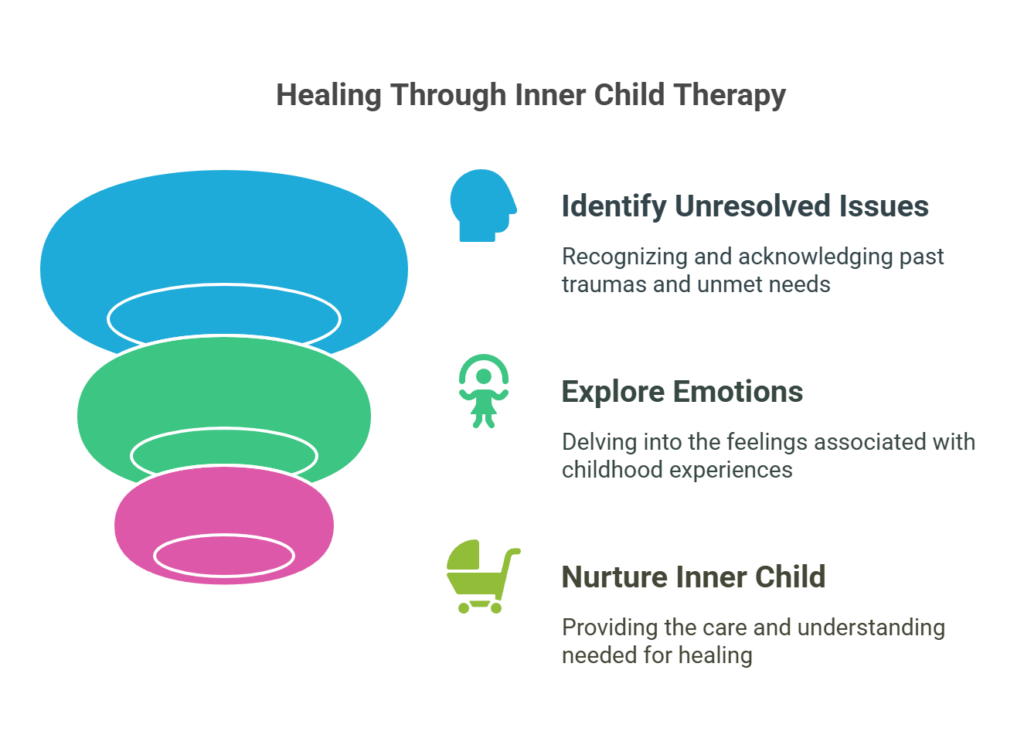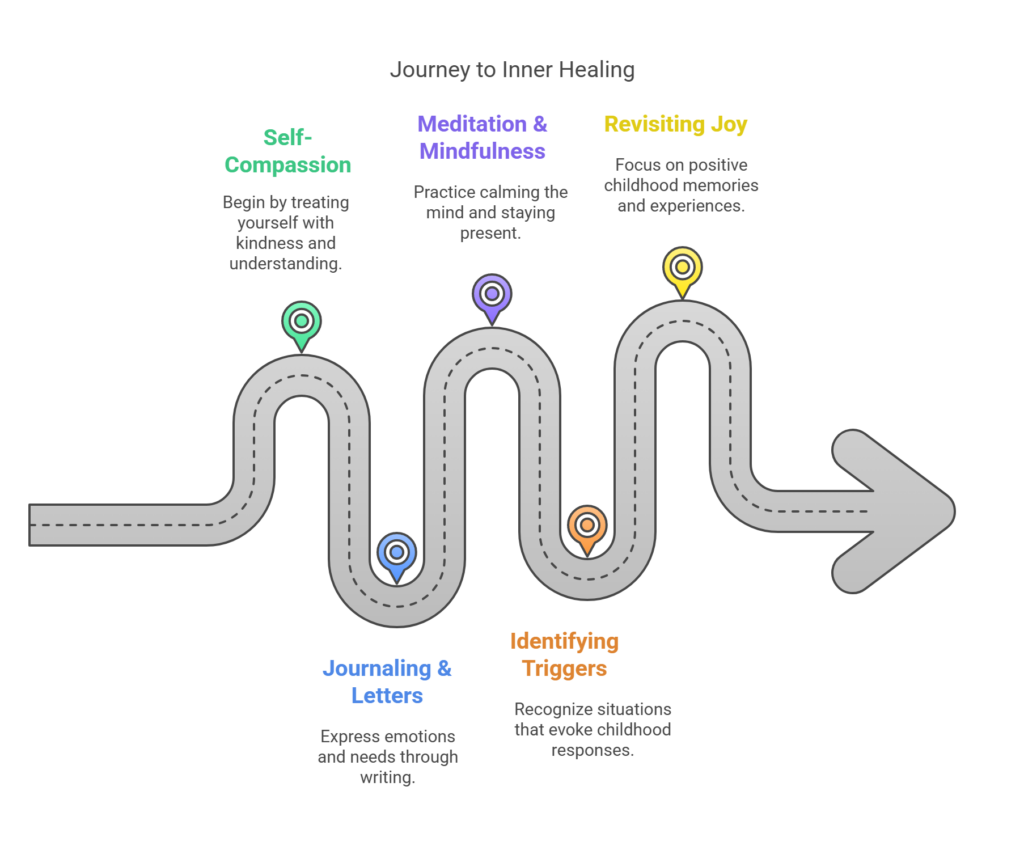Have you ever felt like something inside you held you back from fully embracing life? That nagging feeling of being stuck, weighed down by invisible burdens from your past? It’s not uncommon. Many people experience emotional struggles that trace back to their childhood. These hidden wounds, often unrecognized, can influence how we live, work, and even love as adults.
This is where inner child therapy comes in. It’s a gentle yet powerful approach to healing the emotional wounds that may have been left behind when we were young. Whether it’s the pain of neglect, abandonment, or simply unmet needs, our childhood experiences often shape the adults we become. Inner child therapy helps us revisit these old wounds in a safe and nurturing environment, giving us the chance to heal and grow.
At Relevance Recovery, we understand that no matter how much time has passed, emotional scars from the past can still affect your present. But there is hope. What is inner child therapy? It can guide you toward healing, helping you unlock the emotional freedom you deserve.
Let’s dive deeper into what is inner child therapy.
What is inner child therapy? It’s a therapeutic approach that focuses on healing emotional wounds from your childhood. It’s based on the idea that we all have an inner child, a version of ourselves that holds onto past pain, trauma, and unmet needs. These unresolved feelings can often affect our behavior, emotions, and relationships as adults.

Research from the National Institute of Mental Health (NIMH) indicates that 70% of individuals who have unresolved childhood trauma are more likely to develop mental health disorders such as depression and anxiety in adulthood.
In inner child therapy, the goal is to reconnect with this childlike part of yourself. You get to understand, nurture, and heal the emotional scars that still linger within you. This process allows you to address unresolved issues from the past that are impacting your present life, creating a path toward emotional well-being and healthier relationships.
So, what is inner child therapy? And why is it important?
The emotional struggles we carry often stem from childhood, and many of these struggles go unnoticed until they start affecting our daily lives. Inner child therapy is important because it allows us to:
When you begin to heal your inner child, you permit yourself to let go of past pain and embrace a brighter future.
Now that we understand what is inner child therapy. Let’s explore how it works. This therapy helps you revisit and reconnect with the emotional part of yourself that may still be carrying pain from childhood. The goal is not to relive the trauma but to heal and let go of the emotional baggage that has been carried through the years.

A study published by the National Institute of Health found that 65% of inner child therapy participants reported significant improvement in emotional regulation after engaging in trauma-focused techniques, including guided imagery and art therapy.
Here’s how the process typically works:
Each session is designed to be nurturing, gentle, and supportive. You’re not alone in this process, and your therapist is there to help you heal and grow at your own pace.
What is inner child therapy, and what are its benefits? Extend beyond emotional healing. Studies show that individuals who engage in inner child therapy experience a 50% improvement in emotional resilience and a 40% reduction in relational issues after completing the therapy.
By reconnecting with and healing your inner child, you can experience:
Ultimately, what is inner child therapy? It’s a powerful tool for personal growth, emotional healing, and lasting change.
So, what is inner child therapy? And who can benefit from it? This therapy is beneficial for anyone who has experienced emotional pain or trauma in childhood, whether it was from neglect, abuse, or any other form of hardship. If you find yourself struggling with:
Then, what is inner child therapy? The answer is simple: it’s the support you need to heal and move forward in a healthier way.
At Relevance Recovery, we understand that healing from emotional pain takes time and compassion. Our therapists are trained in inner child therapy and offer personalized, supportive care to help you navigate your healing journey. We create a safe space where you can revisit your past without judgment, allowing you to heal from the inside out.
If you’re ready to start your healing journey, what is inner child therapy? It’s a key step toward rediscovering your true emotional self.
In this session, your therapist will guide you through exercises that help you reconnect with your younger self. Here’s what you can expect during a typical session:
This therapy is about building trust, self-compassion, and emotional resilience.
Healing from emotional wounds doesn’t happen overnight. You have the opportunity to release the pain that has been holding you back. By addressing the needs of your younger self, you can unlock emotional freedom, improve your relationships, and live a more fulfilled life.
If you’re ready to begin your healing journey and reclaim your peace, consider taking the first step today. The road to emotional healing starts with understanding, self-compassion, and a willingness to grow.
Reach out now to start the process.
Inner child work therapy focuses on healing past emotional wounds and unresolved childhood trauma. It helps individuals reconnect with their younger selves, process past experiences, and develop healthier emotional responses, leading to improved well-being and self-awareness.
Five common inner child wounds include abandonment, betrayal, rejection, neglect, and abuse. These wounds often stem from childhood experiences and can impact emotional health, causing difficulties in relationships, self-esteem, and mental health if left unaddressed.
An example of inner child healing is engaging in therapy, where an individual reconnects with painful childhood memories. Techniques like journaling, visualization, and guided meditation can help process these emotions, leading to healing and healthier emotional patterns in adulthood.
Start healing your inner child by acknowledging past wounds and practicing self-compassion. Seek therapy or self-help resources, engage in mindfulness exercises, and create a nurturing inner dialogue. Healing takes time, so patience and consistency are key for lasting results.